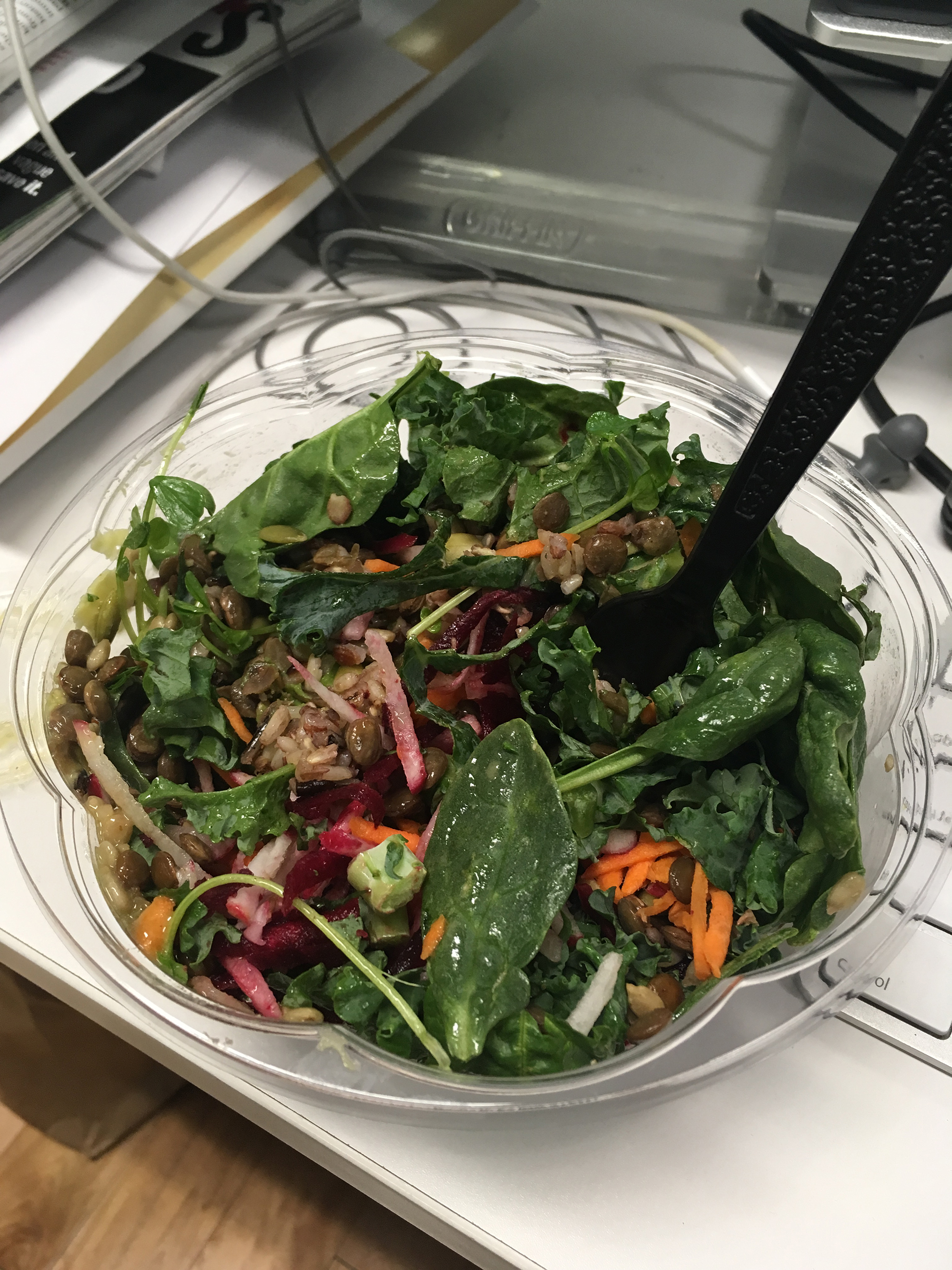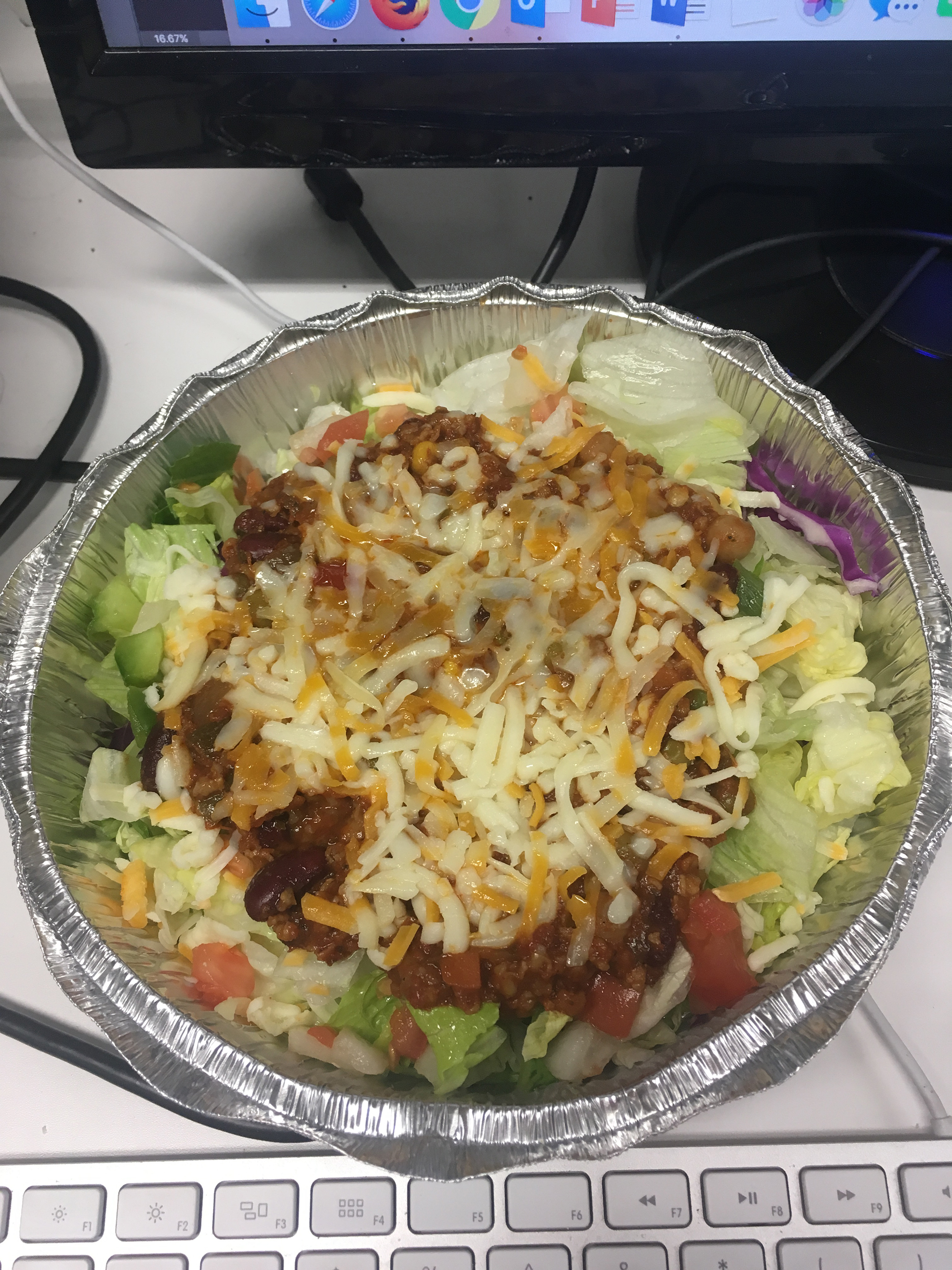In 2016, Canadians wasted an estimated $31-billion worth of food—47 percent in the home and 53 percent at the business level. Stuff gets thrown out by businesses because it’s reached a best-before date that doesn’t necessarily mean it’s bad, only no longer legally suitable for sale; restaurants over-stock and under-sell; people just can’t find time to cook what’s in their food. There’s no single solution—food waste is among the issues being looked at by the federal government in its formation of Canada’s first-ever Canadian Food Policy.
In the meantime, we have apps. In Toronto, two of them, Feedback and Flashfood, aim to give consumers access to food that would otherwise be thrown out—like Ubereats meets dumpster diving—by allowing restaurants and grocery stores, respectively, to list foods that they’re about to pitch at steep discounts. Restaurants can help mitigate losses, people can buy cheap food—everyone wins.
Videos by VICE
To get a better sense of how these apps work—and test to see how much of my diet I could convert to food that would otherwise be considered garbage—I tried both out.
DAY ONE

I check Feedback first thing in the morning to see where I can grab a coffee on my way in to work. The answer: nowhere—I’d have to divert from my planned path in to the office and, being someone who is chronically late, this is not an option. I buy a coffee when I arrive at work—and, using my coffee-sourcing failure as justification, also buy myself breakfast. I’ll start saving the world via food reclamation at lunch.
I work just east of Toronto’s downtown core, which means I have a huge selection of Feedback items—plus both Longo’s that are using the Flashfood program are within walking distance (sort of) of my office. What I don’t have access to is Feedback stuff that I can access within my designated one-hour lunch break on foot that’s available before 3 PM or later, which is great for cheap dinner—the options, which range from sushi to pitas to glasses of wine are genuinely great—but bad for hungry office lunchers.
I choose one of two substantial-seeming options: a salad from a place called POP.
The ordering process on Flashfood is easy—particularly if you’ve ever used Ubereats or similar: you select the item you want, then check out, and the cost is immediately applied to your credit card. What’s different, though, is that there’s no delivery—and, as I learn on arriving at POP, merchants don’t prepare your stuff til you get there. As the woman behind the counter assembles my greens, I kill time by browsing the restaurant’s pantry items—which includes vegan lip balm—and explaining to my colleague why I think chiropractory is bullshit. The woman behind the counter tells me to “have a healthy day” as she hands me what will later turn out to be a perfectly adequate salad.
I have three beers after work and, a bit too buzzed to hunt down Feedback food, eat leftovers for dinner. That counts as food reclamation, right?
DAY TWO

Still too late to make the coffee-run side-quest. I buy breakfast again.
For lunch, my options are again limited. I opt for something that no single person in Toronto has ever opted for by choice in their lives: a vegetarian taco salad, takeout, from Tortilla Flats. It is a deep-fried tortilla, shaped into a bowl, served separate from a foil container of shredded iceberg lettuce, what is almost certainly Tostitos brand mild salsa, and a chili that contains, among other things, green beans. I am Flashfood’s first customer to eat at Tortilla Flats. I eat the tortilla bowl, and little else. I feel satisfied not by the food, but by Flashfood’s pledge to donate 10 percent of proceeds from each meal sold to Second Harvest, itself a remarkable food reclamation outfit in Toronto—though I am overwhelmed by guilt and irony as I later launch a wad of room-temperature green bean chili into the garbage bin beside my desk.
I check Flashfood for dinner. It is … not promising. Aside from a box of pumpkin spice Mini Wheats, the offerings are mainly limited to BBQ equipment and accessories—end-of-season clearance, in other words, but not actual food. Luckily the taco salad has left me with little appetite. I go out for dinner anyway.
DAY THREE
Here’s where the whole thing gets tricky. Because I live pretty far from downtown—and because, when I started this experiment, there was little to no actual food available via Flashfood—there aren’t any Feedback-participating restaurants anywhere near me. Ben Walters, Feedback’s co-founders, admits that this is a problem—a good problem, however: “We have a huge number of users,” he says, “but we really need to add more restaurants.”
I am discouraged, lazy, and feeling a sort of irrational resentment of BBQ equipment. I fall off the wagon.
DAY FOUR

Three days later, I am desperate for actual groceries. For the first time, I check Flashfood and find actual, viable food: quiches! Two varieties! For $5.99 instead of $7.99! I make the purchase—which, like Feedback, follows basically the same conventions of Ubereats, but pick-up rather than delivery—and wait excitedly till EOD, when I can hike the 20-minute walk from work to Longo’s to buy two almost-expired quiches.
When I arrive, there is absolutely no indication of how I’m supposed to find my stuff. I locate the customer service desk, where a towering man dressed as Jigsaw from the Saw movie franchise (yes, it was Halloween) leads me to the back of the store. He explains that Flashfood is “basically a reduced rack, but as an app” and expresses some skepticism that it’ll stick around. I locate my quiches, which are in a Flashfood-branded fridge tucked in front of the store’s pharmacy, and follow Jigsaw back to the checkout. He asks his coworkers if they’d like to play a game. They roll their eyes as they bag my quiches.
The quiches are not good. But that’s not Flashfood’s fault. Or Jigsaw’s.
DAY FIVE
I wake up thrilled—it’s discount candy day and, surely, this means discount candy day on Flashfood. I pack a slice of horrible quiche for breakfast as I peruse the app. Sadly, on this day—like so many other days—the app offers nothing but quiche, BBQ tools, and disappointment. Devastated, I finish two quiches, then abandon ship again for several days.
DAY SIX

After an invigorating pilates class, I am feeling virtuous—and I happen to be in the very Feedback-friendly west end—so I open the app to check out what’s available. Lo and behold, a mere 15 minutes away: vegan parfaits and organic granola. On arrival, I let the woman behind the counter know that I’ve ordered via Feedback—and, for the first time, she’s aware of who I am and what I ordered. Hoping to capitalize on her awareness, I ask how Feedback actually works; the first thing out of her mouth is an assurance that the food I am getting is not, in fact, spoiled—it’s just surplus.
This might mean one of two things: as Wilson explains to me, 70 percent of the items listed on Feedback are end-of-day waste, but he and his team have also suggested that participating restaurants list time-specific promos during periods of the day when customer foot traffic falls well short of overhead. (This might explain why I can’t get anything for lunch, but plenty at 3 PM) “What we realized quickly was if we were only going to focus on pre-prepared food that was going to get thrown out, our market wasn’t going to be big enough to get customers going into the app,” he says.
I pour the parfait into a bowl at home and eat it for dinner. I save the granola for breakfast the next day.
DAY SEVEN

On this day, Flashfood offers me a bevvy of pre-made options ranging from roasted root vegetables to asparagus with hollandaise; from jerk chicken to chicken fingers. AND SURPLUS HALLOWEEN CANDY. Never in my 31 years on planet Earth have I been so excited for pre-prepared grocery store chain hot table food in clamshells and miniature O’Henrys. I add a container of roasted root vegetables, a container of chicken fingers, three 0 percent fat greek yogurts, two pie pumpkins, low-sodium melba toasts AND CANDY to my cart and check out. It’s not real food—with the exception of the pumpkins which, at time of writing, remain whole on the top of my fridge—but it’s as real as it’s gotten on Flashfood.
“We Are Young” by Fun. pipes through the Longo’s speakers as I approach the checkout with a sense of triumph, having located and purchased an entire, not entirely objectionable meal—which was stacked in the same fridge I’d visited days earlier with Jigsaw, beside about two dozen bags of organic milk.
Later that night, I discover that the roasted root vegetables are a perfect 50-50 split of overcooked and barely cooked, and that the chicken fingers may not be actual chicken. I feel like I am eating from a meal card. This is, again, not Flashfood’s fault.
I eat half a 90-count box of miniature chocolate bars before bed.
RESULTS

These apps are, in theory, very, very good ideas. If that dollar amount at the top of this article didn’t make much of an impact in terms of explaining how big a problem food waste actually is, perhaps it would help to get personal: According to estimates, in developed countries, the average single person wastes approximately 100 kilograms of food each year. Think of Feedback and Flashfood as carbon-credit programs: for every meal you buy, you can feel partially absolved for every drawerful of fresh veggies that, despite your best intentions, you just couldn’t—or wouldn’t—eat.
And it’s not as though people—and young people at that, the people who would likely be Flashfood and Feedback’s main customers—don’t know already that food waste is an opportunity to save money. A few days after I gorged myself on chocolate miniatures, I noticed a Bunz thread soliciting dumpster-diving buddies to scour everything from grocery store back-alleys to the green bins of wealthy North Torontonians for good-albeit-not-great castoffs. This might be the key perk to Flashfood and Feedback, from a consumer perspective: There’s currently no reliably elegant, never mind legal, way of accessing stuff that’s destined for the bin—at least not one that works like Foodora.
That said, I must admit that, since ending my self-imposed garbage food trial, I never returned to Feedback or Flashfood. It’s not that I’m not on-board with the mission, and not that I can afford better. Rather, because the apps stack up in my phone beside the aforementioned Uber Eatses and Foodoras (and their ever-growing legions of cousins), I’ll always choose choice and convenience (read: delivery) over environmental conservation, I guess. Feedback and Flashfood need to bulk up before they hit the big time. And I still kinda can’t shake the taste of that taco salad.
Follow Rebecca on Twitter.
More
From VICE
-

Lettuce (Credit: Sam Silkworth) -

Screenshot: Pokemon Go -

Clara Balzary -

Screenshot: NetEase
